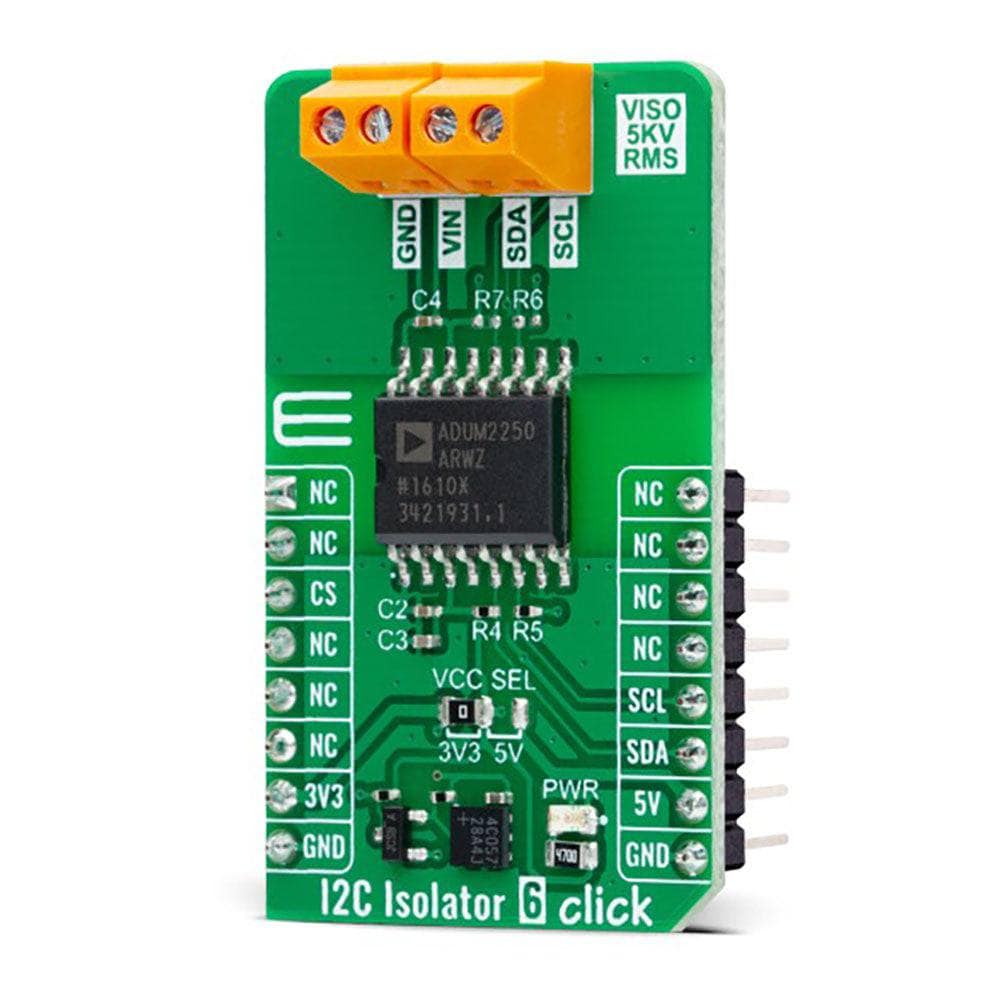
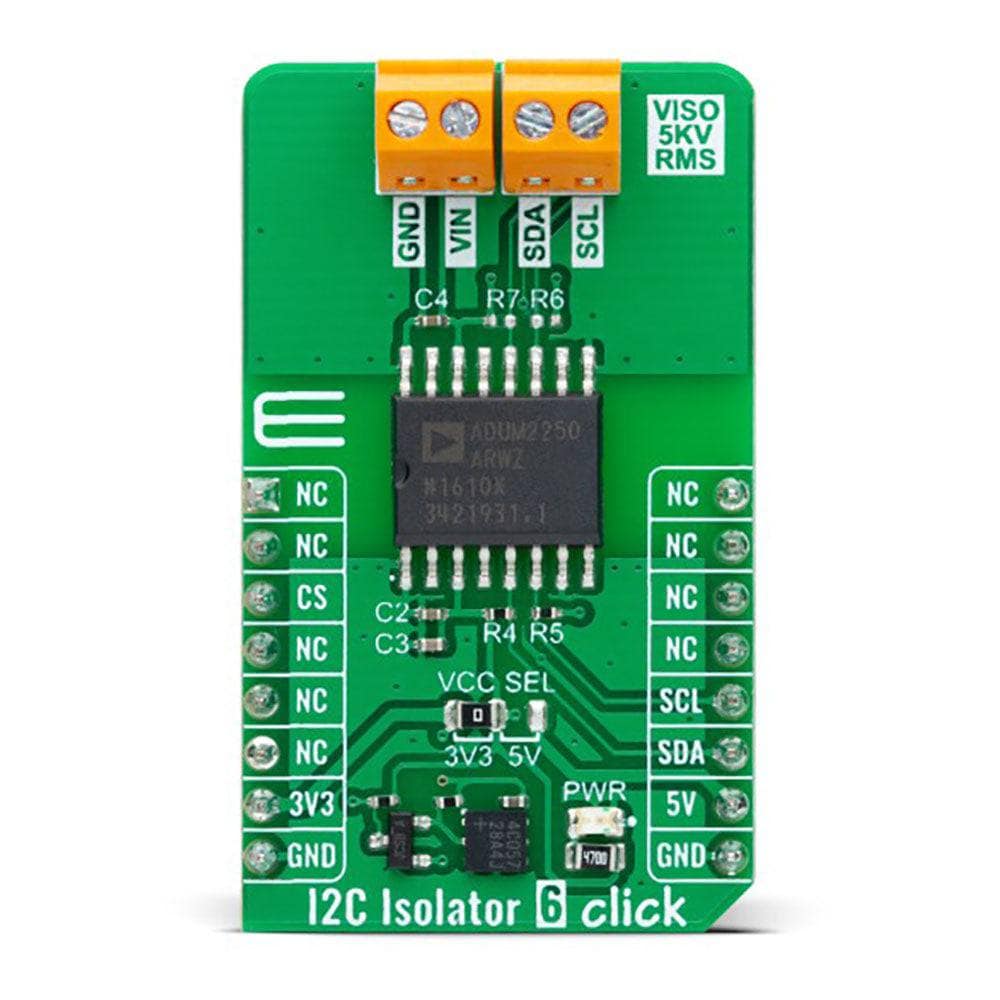
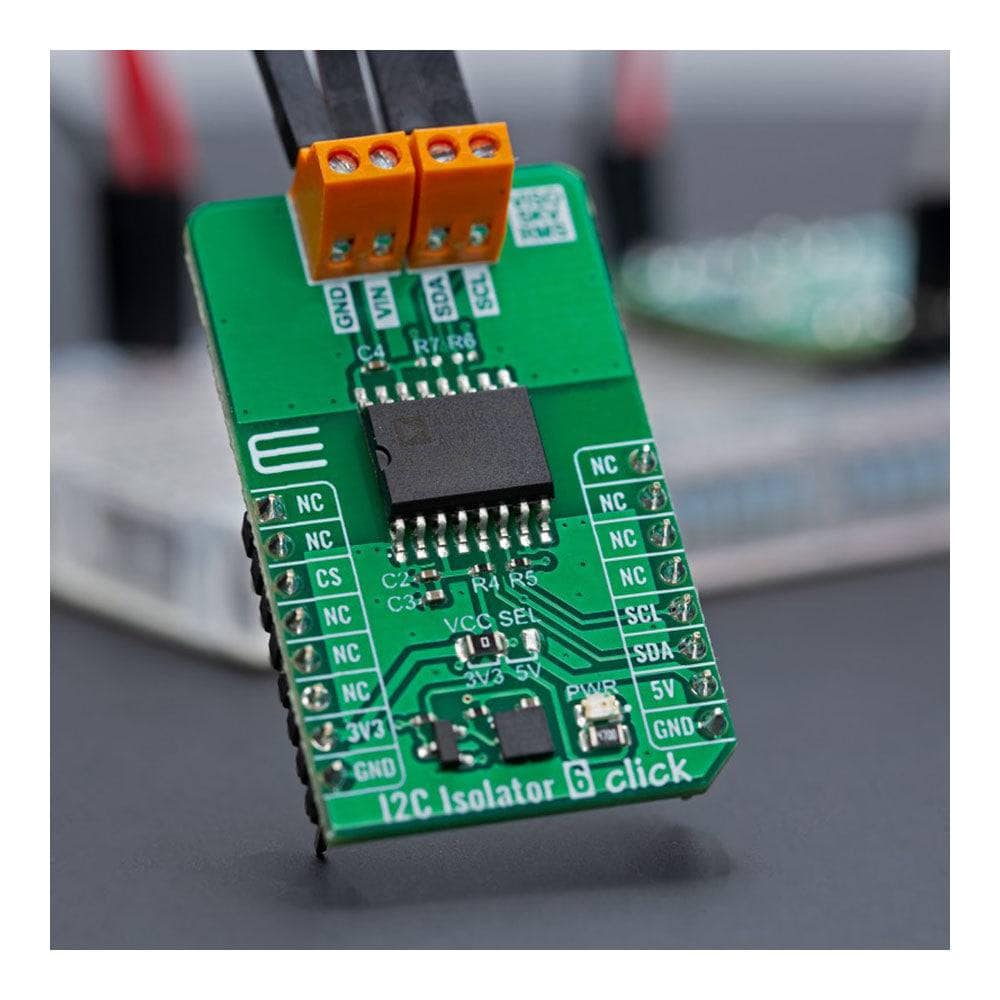
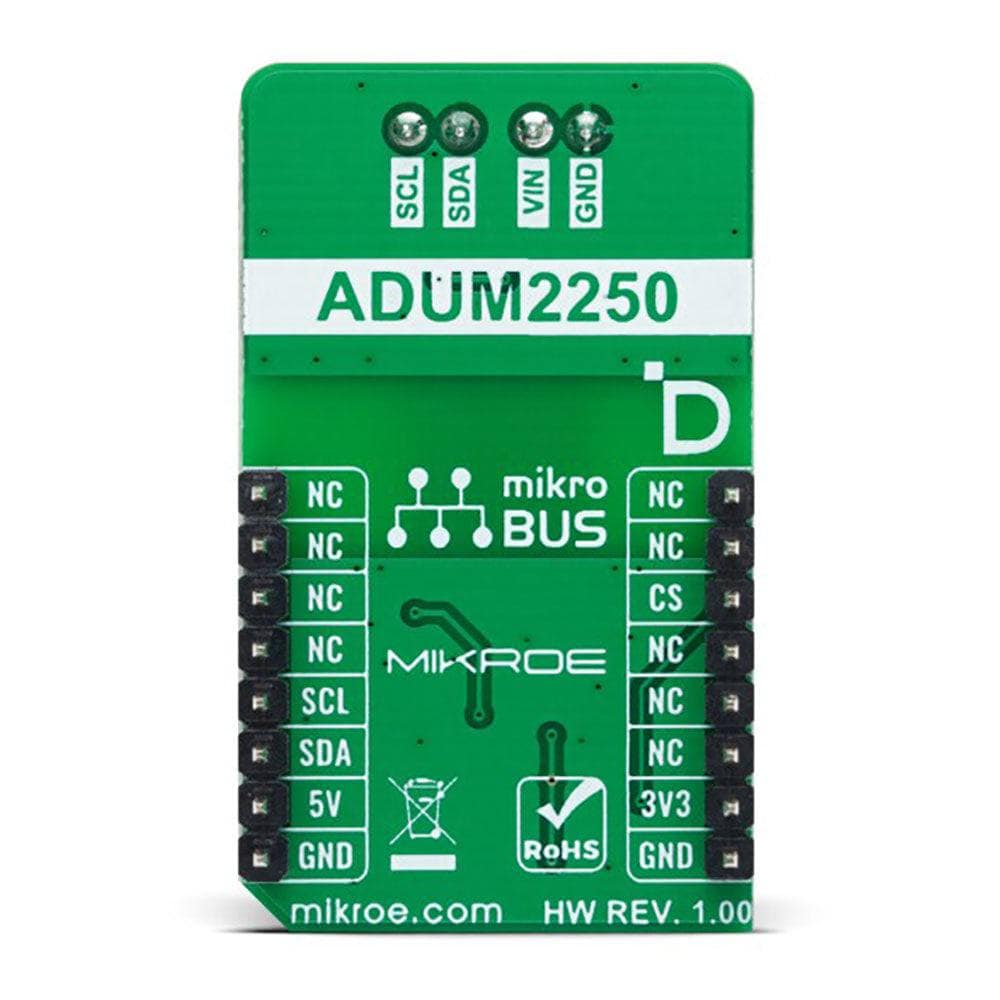
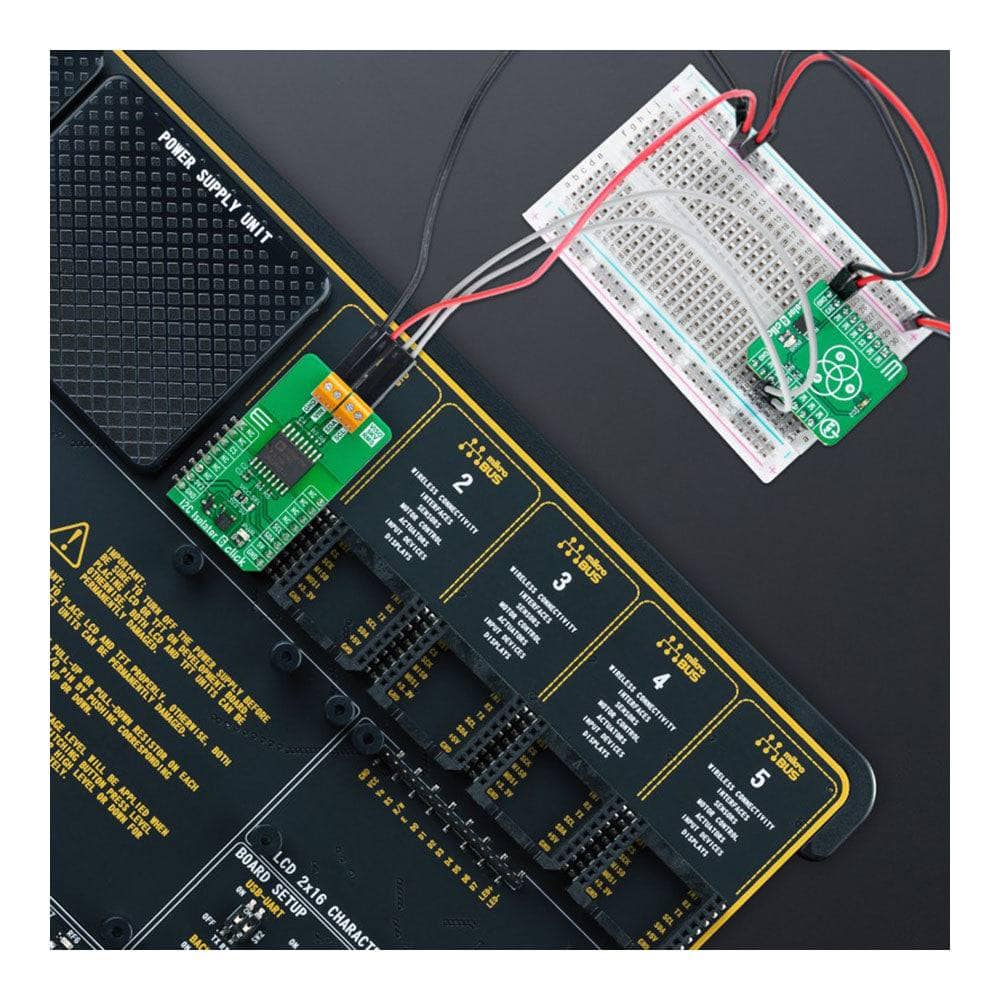
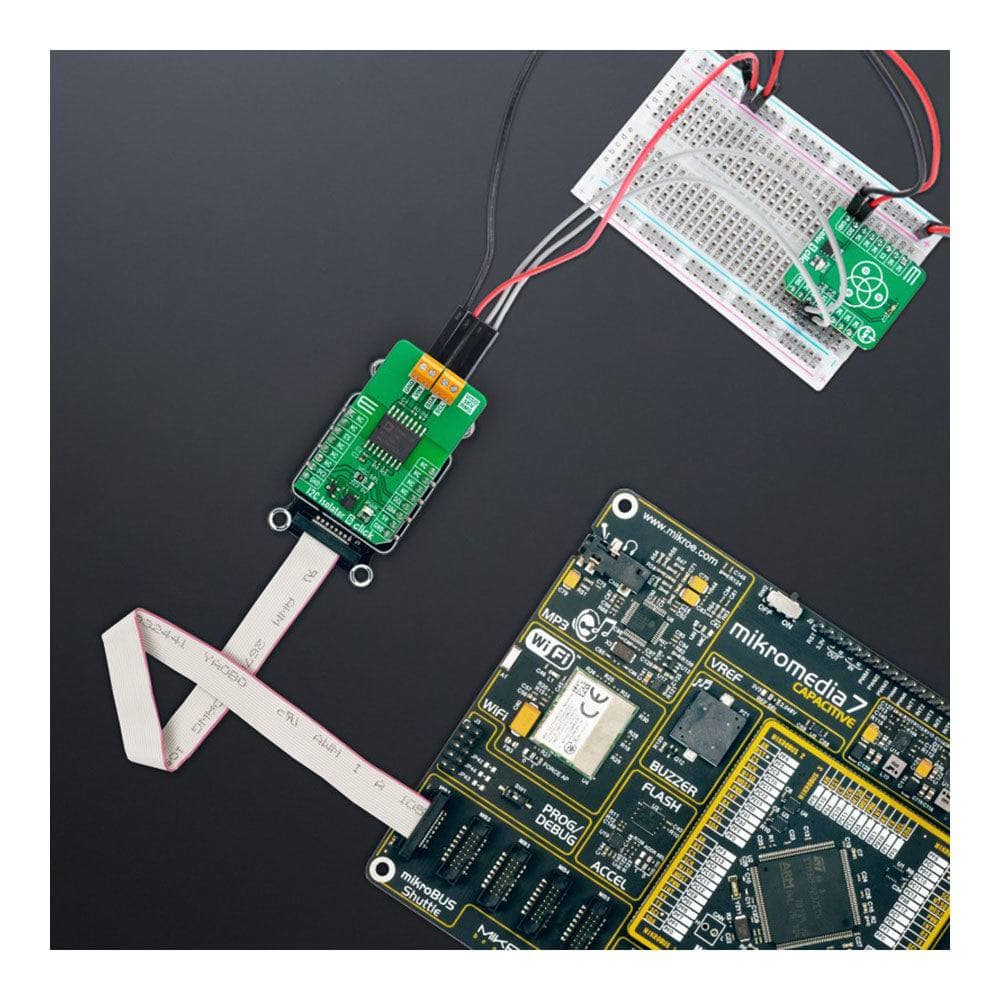
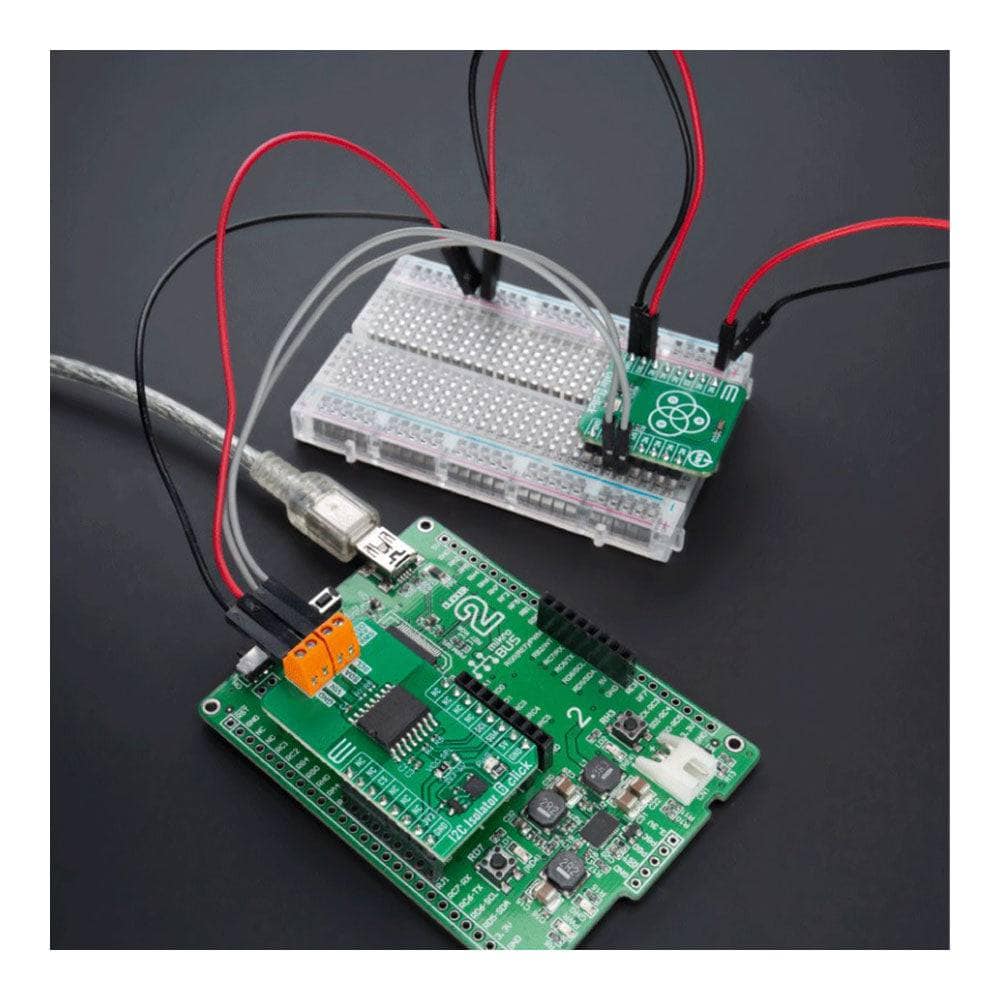
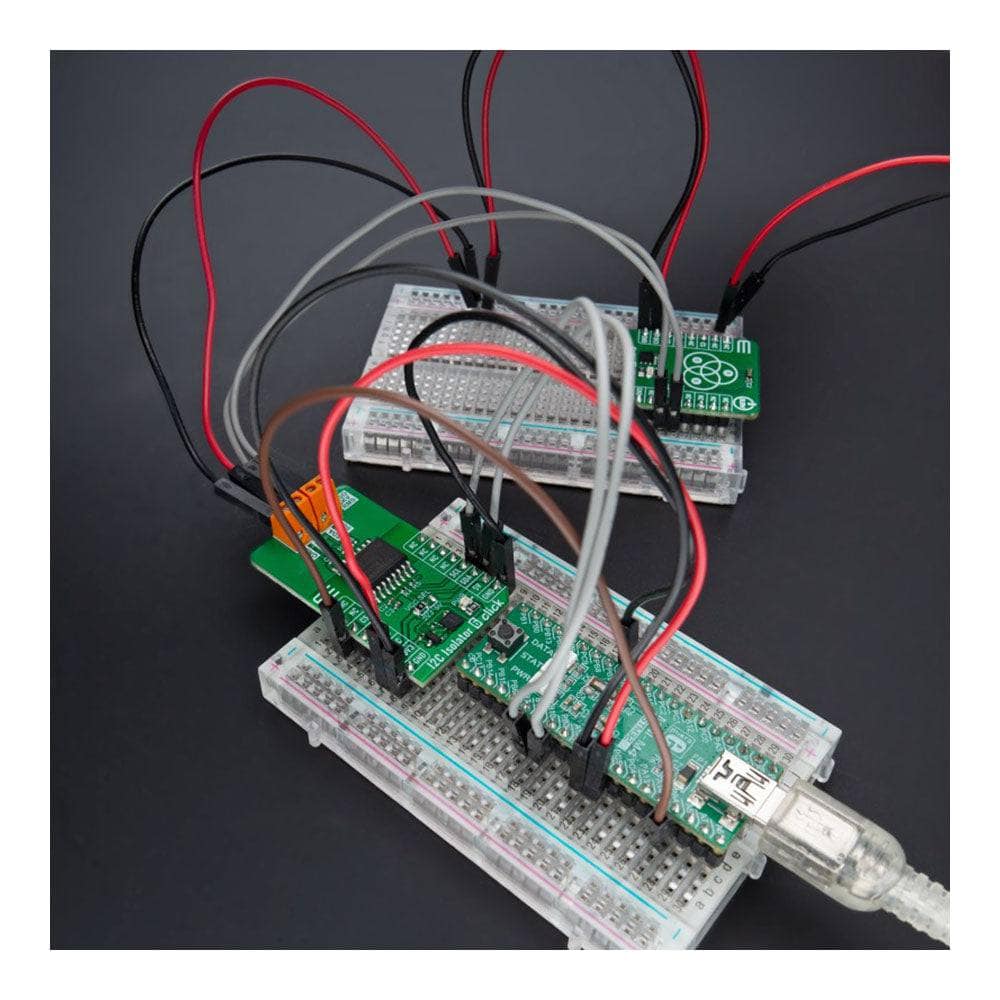
Key Features
Overview
Eliminate the Need for Splitting I2C Signals
With the ADUM2250, you'll enjoy two bidirectional channels that support a fully isolated I2C interface, eliminating the need for splitting I2C signals into separate transmit and receive signals. This innovative design allows for data rates from DC up to 1MHz and includes hot swap circuitry to prevent data glitches.
Perfect for Transferring Digital Signals Between Circuits
Our I2C Isolator 6 Click Board™ is the ideal solution for transferring digital signals between circuits with different power domains at ambient temperatures. Experience seamless integration and optimal performance in your next project.
Supported by mikroSDK Compliant Library
Our I2C Isolator 6 Click Board™ is backed by a mikroSDK compliant library, offering a suite of functions that streamline software development. You'll have all the tools you need to get started right away.
Ready to Use with mikroBUS™ Socket
This Click board™ comes as a fully tested product, ready to be used on a system equipped with the mikroBUS™ socket. Don't wait – upgrade your project with the I2C Isolator 6 Click Board™ today!
Downloads
How Does The I2C Isolator 6 Click Board™ Work?
The I2C Isolator 6 Click Board™ is based on the ADUM2250, a two-channel, 5kVRMS I2C digital isolator from Analog Devices, suitable for hot-swap applications. The ADUM2250 bidirectionally buffers the two I2C signals across the isolation barrier while providing 5kVRMS of galvanic isolation. It transfers digital signals with data rates up to 1MHz between circuits with different power domains at ambient temperatures. It offers the glitch-free operation, excellent reliability, and very long operational life. The wide temperature range and high isolation voltage make the device ideal for harsh industrial environments.
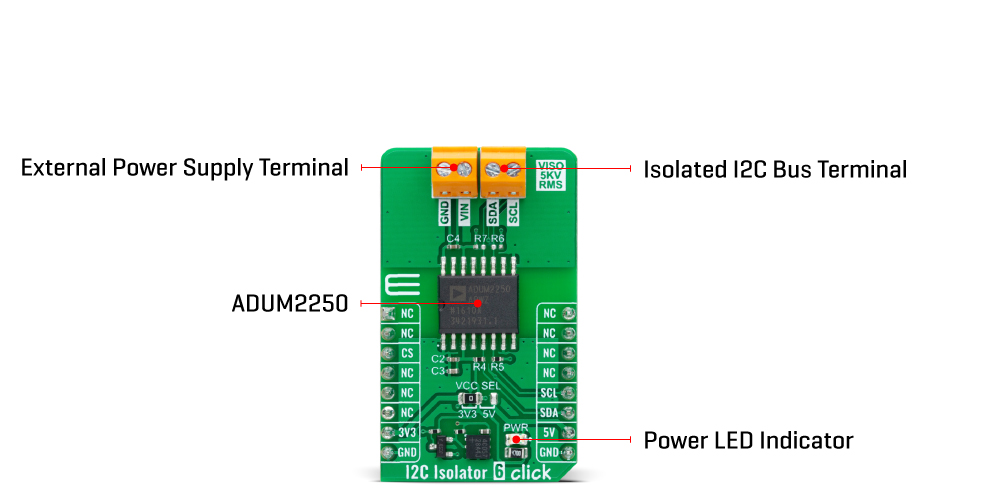
The I2C Isolator 6 Click Board™ also possesses two terminals labelled as VIN and SDA/SCL at the top of the Click board™, where VIN represents the isolated-side power supply of the isolator, while the other corresponds to the isolated bidirectional logic-bus terminal.
This Click board™ can operate with either 3.3V or 5V logic voltage levels selected via the VCC SEL jumper. This way, both 3.3V and 5V capable MCUs can use the communication lines properly. However, the Click board™ comes equipped with a library containing easy-to-use functions and an example code that can be used, as a reference, for further development.
SPECIFICATIONS
| Type | I2C,Isolators |
| Applications | Can be used for transferring digital signals between circuits with different power domains |
| On-board modules | ADUM2250 - two-channel I2C digital isolator from Analog Devices |
| Key Features | Robust galvanic isolation of digital signals, withstands 5kVRMS for 60s, low power consumption, supports hot swap application, glitch-free operation, excellent reliability, long operational life, and more |
| Interface | I2C |
| Compatibility | mikroBUS |
| Click board size | M (42.9 x 25.4 mm) |
| Input Voltage | 3.3V or 5V |
PINOUT DIAGRAM
This table shows how the pinout of the I2C Isolator 6 Click Board™ corresponds to the pinout on the mikroBUS™ socket (the latter shown in the two middle columns).
| Notes | Pin |  |
Pin | Notes | |||
|---|---|---|---|---|---|---|---|
| NC | 1 | AN | PWM | 16 | NC | ||
| NC | 2 | RST | INT | 15 | NC | ||
| NC | 3 | CS | RX | 14 | NC | ||
| NC | 4 | SCK | TX | 13 | NC | ||
| NC | 5 | MISO | SCL | 12 | SCL | I2C Clock | |
| NC | 6 | MOSI | SDA | 11 | SDA | I2C Data | |
| Power Supply | 3.3V | 7 | 3.3V | 5V | 10 | 5V | Power Supply |
| Ground | GND | 8 | GND | GND | 9 | GND | Ground |
ONBOARD SETTINGS AND INDICATORS
| Label | Name | Default | Description |
|---|---|---|---|
| LD1 | PWR | - | Power LED Indicator |
| JP1 | VCC SEL | Left | Logic Level Voltage Selection 3V3/5V: Left position 3V3, Right position 5V |
I2C ISOLATOR 6 CLICK ELECTRICAL SPECIFICATIONS
| Description | Min | Typ | Max | Unit |
|---|---|---|---|---|
| Supply Voltage | 3.3 | - | 5 | V |
| Maximum Withstand Isolation Voltage | - | - | 5000 | VRMS |
| Data Rate | - | - | 1 | Mbps |
| General Information | |
|---|---|
Part Number (SKU) |
MIKROE-5603
|
Manufacturer |
|
| Physical and Mechanical | |
Weight |
0.02 kg
|
| Other | |
Country of Origin |
|
HS Code Customs Tariff code
|
|
EAN |
8606027385414
|
Warranty |
|
Frequently Asked Questions
Have a Question?
-
What is the maximum isolation voltage provided by the ADUM2250?
The ADUM2250 provides a maximum isolation voltage of 5kVRMS.
-
Does the I2C Isolator 6 Click Board™ require splitting I2C signals into separate transmit and receive signals for use with standalone optocouplers?
No, the I2C Isolator 6 Click Board™ eliminates the need for splitting I2C signals into separate transmit and receive signals for use with standalone optocouplers.
-
What is the data rate supported by the ADUM2250?
The ADUM2250 supports data rates from DC up to 1MHz.
-
What are the benefits of using the I2C Isolator 6 Click Board™?
The I2C Isolator 6 Click Board™ offers completely isolated bidirectional communication, simplifies software development with the mikroSDK compliant library, and comes as a fully tested product that is ready to be used on a system equipped with the mikroBUS™ socket.
-
What is the ADUM2250?
The ADUM2250 is a two-channel, 5kVRMS I2C digital isolator from Analog Devices that provides two bidirectional channels and supports a completely isolated I2C interface. It eliminates the need for splitting I2C signals into separate transmit and receive signals for use with standalone optocouplers. It supports data rates from DC up to 1MHz and has hot swap circuitry to prevent data glitches.
-
What is the I2C Isolator 6 Click Board™?
The I2C Isolator 6 Click Board™ is a compact add-on board that provides completely isolated bidirectional communication. It is designed to transfer digital signals between circuits with different power domains at ambient temperatures.








